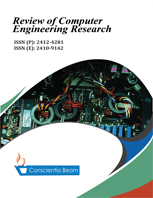To Convalesce Task Scheduling in a Decentralized Cloud Computing Environment
DOI:
https://doi.org/10.18488/journal.76/2016.3.1/76.1.25.34Abstract
With the contempo slump and the immutable crush to deliver more services at a lower cost. Delivery model offers lower cost, and can make quick construction services. IT economics are changing rapidly, and large companies, in particular, looking for new ways to secure capital at a lower cost to maintain the viability of the company. Task scheduling problems are first class related to the overall efficiency of cloud computing facilities. Most developed algorithms for automation planning approach in one parameter of quality of service (QoS). However, if we consider more than one QoS parameter then the problem becomes more challenging. To address the problem, we need to introduce a scheduling strategy for multi-workflows with multiple QoS constrained for cloud computing. We need to introduce an optimized algorithm for task scheduling in cloud computing and its implementation. Furthermore, Load Balancing is a method to distribute workload across one or more servers, network interfaces, hard drives, or other computing resources. Use these components with the load balancing, on the one chamber, grow well in redundancy.





